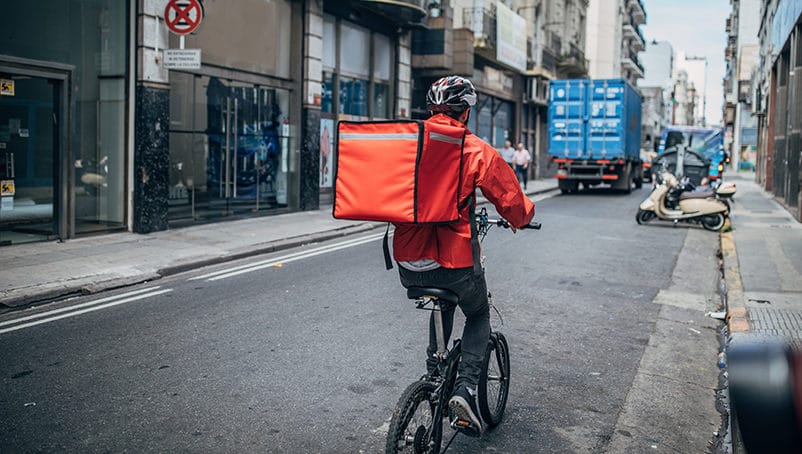1. Research your target market
Knowing your audience increases the chance of success. Look at the area where your business will operate. Are you near a university, business district or suburban families? The demographics of your audience can help determine what you name your business, your marketing strategy, and the kinds of meals you deliver.
You can research your area with local business bureaus to see where there might be a need in your community. You can also conduct research by going into the community and asking/observing what people need.
2. Make a plan and a budget
Create a food delivery business plan and secure funding for your business. These are the two biggest steps to get your business running.
When writing a business plan, you’ll want to consider your target customer base, your startup and ongoing costs and how long it will take to be profitable.
This is also a great time to pick your business name and develop an initial marketing and advertising plan.
To start a food delivery business, your startup costs could range from $3,000 to $25,000.
3. Plan your food delivery menu and services
Once you understand your target market, plan your menu and services. This will vary depending on if you are working with a meal-prep service or local restaurants in your community.
Will you focus on quick meals, easy snacks, lunch, dinner or meals for families or singles? A clear theme will help you as you get started with your delivery service.
If you’re planning on partnering with local restaurants, partner with a mix of eateries to ensure your customers have options.
4. Cover your legal and financial requirements
Every small business needs to:
Form a legal entity: Set up a business structure to help protect your personal assets. Think about the pros and cons of a sole proprietorship, a partnership, an LLC or a corporation.
Register for taxes: Apply for an employer identification number at the IRS website. Make sure you’ve met your state and federal tax requirements before you open your doors.
Open a business bank account: A separate banking and credit line for your business can help protect your personal assets. It also makes filing your taxes easier. Keep a business accounting system to help you understand your finances.
Get business permits and licenses: Check with local, state and federal small business agencies to make sure you have all of the permits and licenses required for a food delivery service in your area.
5. Protect yourself with small business insurance
Find small business insurance coverage specializing in food and beverage insurance to protect yourself from liability, risks and unexpected out-of-pocket expenses.
Most small businesses need general liability insurance to help cover third-party injuries and medical expenses if you’re held responsible for an injury to someone other than your employees. It can also help protect you from financial losses if you’re liable for damaging property you do not own.
In most states, you’ll need workers’ compensation insurance if you hire an employee.
And as a food delivery business, commercial auto insurance can help protect your business delivery vehicles.
6. Create marketing materials and a website
Promote your business to gain local restaurant clients and the customers you plan to serve.
Build a social media presence and a simple, attractive website. Distribute printed flyers to restaurants and neighborhoods. Consider a discount for new restaurant partners and customers to help get the word out.
7. Plan for delivery vehicles and tools
Many delivery businesses provide transportation for their drivers and food service bags designed to maintain temperature. Commercial auto insurance can help cover business-related accidents or other claims.






